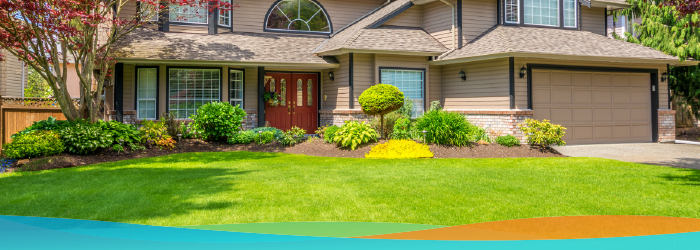Longer days and higher temperatures can turn your lush green lawn into a yellowed dead patch.
You work hard to make sure your lawn looks its best, having that perfect lawn is key to a beautiful neighborhood. Unfortunately, summer heat can ruin all that effort quickly if you do not take the right precautions. This article has tips to keep your community beautiful and green all summer long.
Aerate
Aeration is a useful tool for lawn care. The process involves carefully making small holes in the soil. The reason for this is to allow better access to air, water, and nutrients at the root of your grass. This can be the key to a long-lasting lawn, however, there are a few things to consider.
For summer aeration, you should only do so if you have warm weather grass. The most common forms of warm weather grass are:
- Bermuda grass
- Buffalo grass
- Carpet grass
- Centipede grass
- Augustine grass
- Zoysia grass
These grasses are built to be more tolerant of heat and drought like conditions. While other grasses would react poorly to summer aeration, warm weather grasses are much better suited for it. However, you should only aerate your lawn in early summer as doing so when it is too hot can dry out the soil worse.
Aeration is fairly easy, you can either do it by hand with a garden fork or pitchfork. If you do not want to do it by hand most hardware stores have a lawn aeration tool for purchase or rent. You can also hire a landscaping company to aerate the lawn as well.
Watering deep and early
You may feel like watering your lawn more often leads to a healthier lawn, however, a more effective way to achieve that is to water your lawn deep and early. What this means is that you give your lawn an even layer of water early in the morning. On average you will want to do this just once a week to avoid overwatering and drowning your lawn.
The best time to water in summer is going to be early in the morning. You will want to do this to not only avoid the heat, but the earlier you water the less chance of evaporation happening. It can also greatly reduce the chance of fungus growth as well.
This ensures your lawn gets the appropriate amount of water. The recommended amount is about an inch of water that even covers your lawn, so be wary of any dips or hills your lawn may have to ensure everything is covered evenly and you are not flooding certain parts of the lawn.
Fertilize
Fertilizer is a key element to a healthy lawn all year round. Fertilizing your lawn gives it the chance to maintain density, enhances its green color, and encourages growth. It also helps fight against erosion which can cause damage to existing grass seed. Fertilizer is not a one size fits all item, instead you need to be switching to a summer fertilizer as it starts to heat up.
In the summer you will want to look for fertilizer with added nitrogen, this is the main driver for lush green lawns. You can find this trait in both organic and synthetic fertilizer, both valid options depending on which you prefer. Both kinds of fertilizer have their pros and cons so make sure to do research to see which fertilizer works best for your grass and life.
Similar to watering, you must be very wary of overfertilizing your lawn. The recommended amount of fertilizer is about a pound per 1,000 square feet of grass. You will want to apply the fertilizer three times to your lawn throughout the summer season. Right at the beginning of summer is the first time to use fertilizer before it starts to get too hot. The next will be mid-summer, as this is when you’ll need to fortify your grass the most, though you should do it early to avoid the fertilizer potentially burning your grass. Then finally, as summer winds down, fertilize the lawn one last time to help it carry over to the fall.
Grass length and mowing
Mowing your lawn is a year-round key to beautiful healthy grass. In the summer, however, the length you keep your lawn does need to adjust. In the summer you want longer grass than normal, this is because the longer grass creates shade for the dirt and makes it more drought resistant. The minimum recommended length to achieve this effect is three inches, but you can allow it to get higher. Of course, your HOA may require you to keep it shorter, so be sure to check on approved grass lengths.
It is recommended that you sharpen your mower blade and raise its height before the summer starts as well. This will lead to higher, more even cuts that will give your lawn a healthy look. It will also provide the dirt shade and cause minimum damage to the grass itself. If you can leave your clippings on the lawn, the decomposed grass will act as fertilizer and can minimize soil runoff.
Summer doesn’t have to be a death sentence for your lawn. A green lawn may require extra work, but using these tips you can keep that lovely, lush yard all summer long!
For any questions about your HOA’s lawn requirements feel free to go to your association’s website or look in the Jellybird app.

